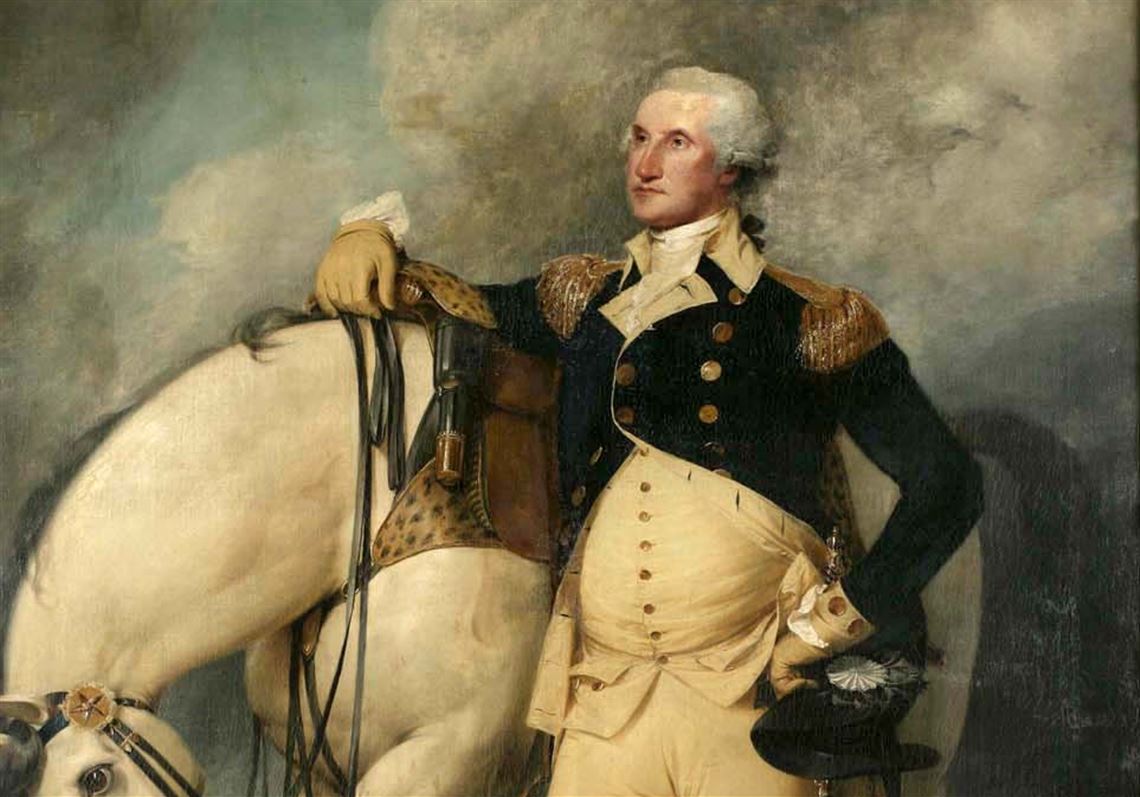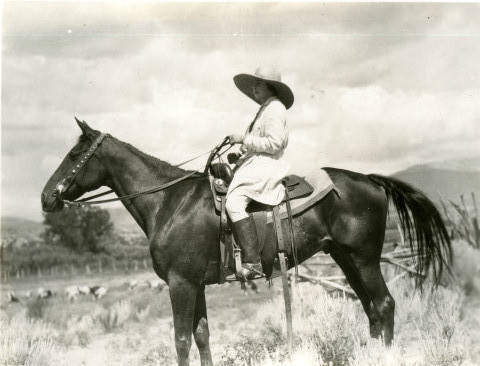
NHPRC News
June 2023
Inside the Commission
Meet our new Chairman: Colleen Shogan
On May 17, 2023, Dr. Colleen Shogan was sworn in as the 11th Archivist of the United States. She is the first woman to hold the position, succeeding David S. Ferriero, who retired in April 2022. She is  also the new chair of the National Historical Publications and Records Commission.
also the new chair of the National Historical Publications and Records Commission.
Shogan most recently served as Director of the David M. Rubenstein Center for White House History and Senior Vice President of the White House Historical Association. She previously worked for more than a decade at the Library of Congress, serving in senior roles as the Assistant Deputy Librarian for Collections and Services and the Deputy Director of the Congressional Research Service. Earlier in her career, she worked as a policy staff member in the U.S. Senate and taught at Georgetown University and George Mason University. She earned a BA in Political Science from Boston College and a Ph.D. in American Politics from Yale University, where she was a National Science Foundation Graduate Fellow. She is a member of Phi Beta Kappa and of the United States Capitol Historical Society’s Council of Scholars. Additionally, Dr. Shogan served as the Vice Chair of the Women’s Suffrage Centennial Commission and the Chair of the Board of Directors at the Women’s Suffrage National Monument Foundation.
As Archivist of the United States, Shogan will oversee NARA, an independent federal agency that serves American democracy by safeguarding and preserving the records of our government, so people can discover, use, and learn from this documentary heritage. The National Archives ensures continuing access to the essential documentation of the rights of American citizens and the actions of their government. From the Declaration of Independence to accounts of ordinary Americans, the holdings of the National Archives directly touch the lives of millions of people. The agency supports democracy, promotes civic education, and facilitates historical understanding of our national experience. The National Archives carries out its mission through a nationwide network of archives, records centers, and Presidential Libraries as well as online at www.archives.gov
National Archives Awards $6.5 Million in Grants
The National Archives has awarded 47 grants totaling $6,510,701 for projects in 27 states and the District of Columbia to improve public access to historical records. The National Archives grants program is carried out through the National Historical Publications and Records Commission (NHPRC). A complete list of new grants is available online at https://www.archives.gov/nhprc/awards/awards-5-23-1
Two projects went to support professional development: the Archives Leadership Institute for training mid-career archivists and eLaboratories for online training for practitioners in historical and scholarly digital editions. Each project is located at the University of Virginia.
Grants went to 17 edition projects to publish the papers of key American figures such as George Washington, Frederick Douglass and Jane Addams, as well as cross-cutting projects such as the Chinese American WWII Veterans Online Resource and Last Seen: Finding Family After Slavery, which is digitizing records of “Information Wanted” advertisements placed in newspapers across the United States by formerly enslaved people searching for family members and loved ones after emancipation.
Five projects will enhance Public Engagement with historical records:
- “Teaching Care: Building a History Curricular Library of Chicago’s Black Nurses,” an initiative of the Midwest Nursing History Research Center at the University of Illinois, Chicago;
- Stillman College’s collaborative research program on African American female landowners in Alabama’s Black Belt;
- Lewis & Clark College’s Vietnamese Portland Archive;
- A new embedded Exhibit Tool for the University of Northern Iowa's Fortepan.us, a digital archival platform;
- The Chicago Covenants Project, which draws on volunteers to locate, digitize, and make available racially restrictive covenants in the analog land records from Cook County, through a project sponsored by Virginia Tech University.
An additional 21 archival projects will preserve film and video, and manuscript collections documenting Black American history, labor records, theatrical collection, early legal records in Arizona, colonial diaries from Westchester County, feminist history collections at West Virginia University, women’s history at the University of Utah, a history of the 1939 sit-in at the Arlington (VA) Public Library, and the records of Quaker-operated Indian Boarding Schools.
Christopher Eck, Executive Director of the NHPRC, presented the grant applications and policy issues to the full Commission. The Archivist of the United States, Colleen Shogan, is the Chairman of the Commission. Established in 1934, the NHPRC awards grants for preserving, publishing, and providing access to historical documents.
Grant Opportunities
Important: You should contact us early on in the application process to discuss your project. We encourage you to provide a draft, which the program director will review and offer advice for revision before the final deadline.
Archival Projects
For projects that ensure online public discovery and use of historical records collections.
- Draft Deadline (optional): August 15, 2023
- Final Deadline: November 2, 2023
Public Engagement with Historical Records
For projects that encourage public engagement with historical records.
- Draft Deadline (optional): August 15, 2023
- Final Deadline: November 2, 2023
Publishing Historical Records in Collaborative Digital Editions
For projects to publish documentary editions of historical records.
- Draft Deadline: August 15, 2023
- Final Deadline: November 2, 2023
News from the Field
Documenting the Journey Wall
The Museum of Chinese in America, with support from the NHPRC, is undertaking a three-year project to digitize and make accessible online 150 oral histories drawn from eleven of the Museum’s oral history collections, including: Waves of Identity; 8th Avenue in Sunset Park; Chino-Latino interviews; Performing Chinese America; 9/11 Chinatown documentation; Tales of gentrification in Chinatown; Chinese American fashion designers; Stories of Chinese American food and identity; and the Chinese American Diaspora. These audio and video recordings document a wide range of lived experiences of Chinese Americans across the United States.
As part of the project, they are archiving The Journey Wall, a custom art installation created for the museum’s lobby in New York City by renowned artist/designer Maya Lin. The wall is composed of bronze tiles through which Chinese Americans can permanently honor and remember their family roots. Each tile bears the name of an individual or family, their ancestral home, and current place of residence in America. The wall is currently in progress; once completed, it will highlight the expansiveness of the Chinese American Diaspora and the diversity of immigration stories from across the country - from artists to businessmen. The interviews in this collection are the stories of the Chinese American families that are part of the Journey Wall installation. During the grant period, 19 oral history interviews for the Journey Wall Collection were digitized.
Among those interviews is one with Maxine Hong Kingston, an award-winning author and poet, noted for her novels and non-fiction writing concerning the Chinese American experience. Her work blends elements of her cultural heritage and folklore, and often comments on issues of gender, ethnicity, and oppression. In this interview, Maxine discusses her family, her childhood, her education, and her achievement as author and being a Chinese American. She reflects on the legacy that she leaves to her granddaughter.
You can listen to the Journey Wall interviews at the museum's Oral History Archives.
The Women of Acequia Madre
The Acequia Madre House was built in 1926 in Santa Fe by Eva Scott Fényes, her daughter, Leonora S. M. Curtin, and granddaughter, Leonora F. Curtin. Today houses their legacy in the form of vast collections, spanning more than 150 years of family history, including about 4,000 objects, 12,000 photographs, 700 boxes of archival material, and a historic library of 5,000 books.
Over the course of 150 years, these three women studied and participated in cultural conservation of the regions in which they lived and traveled, including ethnobotany of Northern New Mexico, Native American languages and songs, Western and Southwestern architecture, and the arts and folk arts of the United States and Finland.
They contributed substantially to the communities in which they lived, wrote to each other daily, and saved nearly everything. The result is a remarkable archive--a time capsule covering the period from 1849 to 1999.
An NHPRC grant to the New Mexico historical records advisory board enabled them to award a regrant to the Women's International Study Center to digitize material objects and documents of the collection, including paintings, ledger books, letters, photographs, and ethnographic materials. Curator Martin Schultz created biographical entries for 165 prominent artists and intellectuals whose relationships with the women of Acequia Madre House enriched the cultural life of the region. He was assisted by two staff members, whose tasks included scanning over 1600 documents and images, then entering that metadata into the database.
You can learn more at New Mexico Digital Collections.
A Ghost in the Archives
Our friends in South Carolina awarded regrants through NHPRC funding to a dozen projects across the Palmetto State. You can find a full list of the grants at https://scdah.sc.gov/shrab-regrant-program
Included in the awards was a grant to the Pendleton District Commission to digitize, preserve, and make publicly accessible both online and in person, a collection of store ledgers and African American History files in the Hunter’s Store archives.
Built in 1850 and located in the center of town, the building first served as a general store for Jesse Lewis. In 1870 it was purchased by partners and eventually James Hunter, and for decades, the general store sold everything from shoes to coffee, as well as farm tools and chicken feed. It remained in business until 1929, when the owners moved to a building next door, closing the original structure which sat mostly unused and crumbling until the newly-formed district commission bought it in 1968. With new plumbing, electricity and other improvements, Hunter’s Store soon housed photographs, business and church records, and historical records for Anderson, Oconee and Pickens counties.
And perhaps a ghost. With red hair and a beard, no less.
You can read more about such spooky matters in the Southern Edge magazine.
Gertie Speaks! Or dances, at least.
 Gertie the dinosaur was one of the very first animated stars of early silent films. Created by Winsor McKay, Gertie first appeared in 1914.
Gertie the dinosaur was one of the very first animated stars of early silent films. Created by Winsor McKay, Gertie first appeared in 1914.
Now, students at the American Music Research Center at the University of Colorado have put a new old score to the film. They are using the Grauman's Theatres Scores collection, which once belonged to Los Angeles’s cinema chain, and houses pre-composed pieces for the musicians to use, recreating the golden Silent Era. These pieces are digitally accessible due to a National Historical Publications and Records Commission grant. You can check out the collection at https://cudl.colorado.edu/luna/servlet/CUB~31~31
The class final featured a concert, showing off the brand-new music written for the occasion. The class of musicians presented new scores for “Gertie the Dinosaur” (1914), “Get Out and Get Under” (1920) and “Filibus: The Mysterious Air Pirate” (1915).
You can read more about the seminar project at https://www.colorado.edu/.../learning-art-silent-film...
Tennis, anyone?
If you are a tennis enthusiast, you probably have used Penn tennis balls. They were originally made by the Pennsylvania Rubber Company founded in 1910 in the small town of Jeannette, Pennsylvania.
While the factory is no longer there, we have access to some records of the Pennsylvania Rubber Company, including photographs of the workers meeting quality control. Shown here is an image by photograph Samuel Musgrave from the summer of '47 when the Pennsylvania Rubber Company produced 70% of all tennis balls in the U.S.. Musgrave’s photographs depict employees carefully packaging, weighing and testing the bounce of the company’s signature product to make sure they met the United States Tennis Association’s specifications.
You can read more about the Samuel A. Musgrave collection of industrial photographs, part of NHPRC-supported project at the Heinz History Center in Pittsburgh to process 14 collections related to businesses headquartered in Western Pennsylvania.
Jefferson’s “Adoptive Son”
In a letter to Thomas Jefferson in March 1789, William Short writes from Rome with an eye on the Virginia delegation to Congress: "If I could suppose that circumstances would be so favorable to me as to enable me to return and fix myself in America as I would wish, I should have no objection to be passed over unattended to by Congress, but as I have no reason to hope that that will be the case, it would a mortifying thing to see some other preferred."
Instead, Short returned to his post in Paris and continued to serve his country as a diplomat. He had come to France as Jefferson's secretary in 1784 and would remain until 1802, one of the longest tenures of the early U.S. diplomatic corps. Jefferson once called Short his “adoptive son,” and after his career as a diplomat and fiscal agent in Europe, Short was a successful businessman and philanthropist in the United States, and an early advocate of the emancipation of enslaved people in his home state.
With support from the NHPRC, the University of South Carolina has launched a project to create a digital edition of Short's papers, and you can read more about the project at the Papers of William Short.
Short was also a charming correspondent. At the end of his Roman letter to Jefferson, he makes a delightful confession (quoting Laurence Sterne of "Tristram Shandy" renown):
"We have here at present fine weather after several days very bad. There will be a great promotion of Cardinals about Easter. This is what now engages the attention of Rome.—I have been going through the shops of this place as finishing the course of curiosities. One might lay out a fortune in them if he once allowed himself to begin. It requires a good deal of self denial to keep clear. All these rare and curious things make one desire more than ever to possess a large fortune and feel more sensibly the want of it. Sterne says the best way of resisting temptation is to fly it. This is what I am about to do."
You can read the letter on Founders Online.
Would you like to receive updates from the NHPRC?
 Subscribe to our mailing list to receive NHPRC News and other special announcements.
Subscribe to our mailing list to receive NHPRC News and other special announcements.









